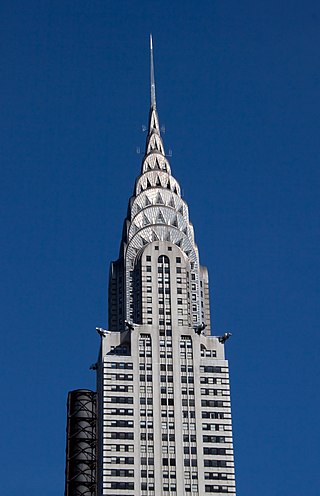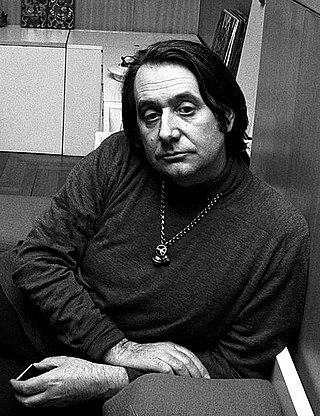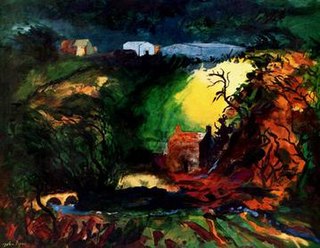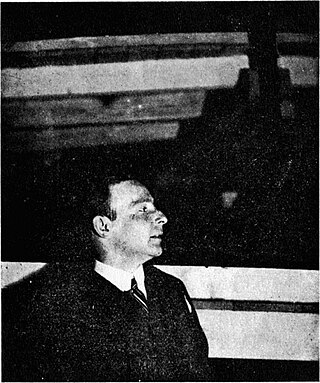
George Tsypin is an American stage designer, sculptor and architect. He was an artistic director, production designer and coauthor of the script for the Opening Ceremony of the Olympic Games in Sochi in 2014.

George Tsypin is an American stage designer, sculptor and architect. He was an artistic director, production designer and coauthor of the script for the Opening Ceremony of the Olympic Games in Sochi in 2014.
Tsypin was born in Kazgorodok, Kazakhstan (former Soviet Union), where his parents were in internal exile after being released from GULAG as political prisoners. [1] He studied architecture in Moscow and theater design at NYU in New York.
Tsypin has worked for many years with renowned directors and composers, such as Julie Taymor, Peter Sellars, Francesca Zambello, Pierre Audi, Jurgen Flimm, Philip Glass, John Adams, Kaija Saariaho and Andrey Konchalovsky.
He has won many awards, including the International Competition of "New and Spontaneous Ideas for the Theater for Future Generations" at Georges Pompidou Center in Paris.
His designs for opera have been produced all over the world, including Salzburg Festival, Opera de Bastille in Paris, Covent Garden in London, La Scala in Milan, Mariinsky Theater in Saint Petersburg, Bolshoi Theater in Moscow and Metropolitan Opera in New York.
Tsypin has worked in all major theaters in the United States, as well as in film and television.
His sculpture received its first one-man gallery show in 1991 at the Twining Gallery in New York. He created the Planet Earth Gallery, one of the Millennium Projects in England: a major installation of moving architectural elements, videos and 200 sculptures.
Tsypin was chosen to exhibit his work at the Venice Biennale in 2002. His monograph, GEORGE TSYPIN OPERA FACTORY: Building in the Black Void, was published by Princeton Architectural Press in 2005.
Tsypin's Broadway debut as a set designer for a musical was Disney Theatrical's production of The Little Mermaid , at the Lunt-Fontanne Theatre. [2] He designed the set for the new musical Spider-Man: Turn Off the Dark for which he won Outer Critics Award and received Tony Award nomination.
He designed the SeaGlass Carousel for Battery Park next to the World Trade Center site. [2] [3] [4]
George lives in New York with his wife Galina. He has two daughters, Allie, a film director, and Sonja, a cinematographer.

Art Deco, short for the French Arts Décoratifs, and sometimes referred to simply as Deco, is a style of visual arts, architecture, and product design, that first appeared in France in the 1910s, and flourished in the United States and Europe during the 1920s to early 1930s. Through styling and design of the exterior and interior of anything from large structures to small objects, including how people look, Art Deco has influenced bridges, buildings, ships, ocean liners, trains, cars, trucks, buses, furniture, and everyday objects like radios and vacuum cleaners.

Renzo Piano is an Italian architect. His notable buildings include the Centre Georges Pompidou in Paris, The Shard in London (2012), the Whitney Museum of American Art in New York City (2015), İstanbul Modern in Istanbul (2022) and Stavros Niarchos Foundation Cultural Center in Athens (2016). He won the Pritzker Architecture Prize in 1998.

Frank Owen Gehry,, FAIA is a Canadian-born American architect and designer. A number of his buildings, including his private residence in Santa Monica, California, have become world-renowned attractions.

Art Nouveau is an international style of art, architecture, and applied art, especially the decorative arts. The style is known by different names in different languages: Jugendstil in German, Stile Liberty in Italian, Modernisme in Catalan, and also known as the Modern Style in English. It was popular between 1890 and 1910 during the Belle Époque period, and was a reaction against the academic art, eclecticism and historicism of 19th century architecture and decoration. It was often inspired by natural forms such as the sinuous curves of plants and flowers. Other characteristics of Art Nouveau were a sense of dynamism and movement, often given by asymmetry or whiplash lines, and the use of modern materials, particularly iron, glass, ceramics and later concrete, to create unusual forms and larger open spaces.

The Victoria and Albert Museum in London is the world's largest museum of applied arts, decorative arts and design, housing a permanent collection of over 2.27 million objects. It was founded in 1852 and named after Queen Victoria and Prince Albert.

Modern architecture, or modernist architecture, was an architectural movement or architectural style based upon new and innovative technologies of construction, particularly the use of glass, steel, and reinforced concrete; the idea that form should follow function (functionalism); an embrace of minimalism; and a rejection of ornament. It emerged in the first half of the 20th century and became dominant after World War II until the 1980s, when it was gradually replaced as the principal style for institutional and corporate buildings by postmodern architecture. According to Le Corbusier the roots of the movement were to be found in the works of Eugène Viollet le duc.

Ettore Sottsass was a 20th century Italian architect, noted for also designing furniture, jewellery, glass, lighting, home and office wares, as well as numerous buildings and interiors — often defined by bold colours.

John Egerton Christmas Piper CH was an English painter, printmaker and designer of stained-glass windows and both opera and theatre sets. His work often focused on the British landscape, especially churches and monuments, and included tapestry designs, book jackets, screen-prints, photography, fabrics and ceramics. He was educated at Epsom College and trained at the Richmond School of Art followed by the Royal College of Art in London. He turned from abstraction early in his career, concentrating on a more naturalistic but distinctive approach, but often worked in several different styles throughout his career.

Scenic design is the creation of theatrical, as well as film or television scenery. Scenic designers come from a variety of artistic backgrounds, but in recent years, are mostly trained professionals, holding B.F.A. or M.F.A. degrees in theatre arts. Scenic designers create sets and scenery that aim to support the overall artistic goals of the production. There has been some consideration that scenic design is also production design; however, it is generally considered to be a part of the visual production of a film or television.

The Walker Art Center is a multidisciplinary contemporary art center in the Lowry Hill neighborhood of Minneapolis, Minnesota, United States. The Walker is one of the most-visited modern and contemporary art museums in the U.S.: together with the adjacent Minneapolis Sculpture Garden and the Cowles Conservatory, it has an annual attendance of around 700,000 visitors. The museum's permanent collection includes over 13,000 modern and contemporary art pieces, including books, costumes, drawings, media works, paintings, photography, prints, and sculpture.

Lina Bo Bardi, born Achillina Bo, was an Italian-born Brazilian modernist architect. A prolific architect and designer, she devoted her working life, most of it spent in Brazil, to promoting the social and cultural potential of architecture and design. While she studied under radical Italian architects, she quickly became intrigued with Brazilian vernacular design and how it could influence a modern Brazilian architecture. During her lifetime it was difficult to be accepted among the local Brazilian architects, because she was both a "foreigner" and a woman.

Robert Wilson is an American experimental theater stage director and playwright who has been described by The New York Times as "[America]'s – or even the world's – foremost vanguard 'theater artist.'" He has also worked as a choreographer, performer, painter, sculptor, video artist, and sound and lighting designer.

Thomas Alexander Heatherwick, is an English designer and the founder of London-based design practice Heatherwick Studio. He works with a team of more than 200 architects, designers and artisans from a studio and workshop in King's Cross, London.

Konstantin Alekseyevich Korovin was a leading Russian Impressionist painter.

Russel Wright was an American industrial designer. His best-selling ceramic dinnerware was credited with encouraging the general public to enjoy creative modern design at table with his many other ranges of furniture, accessories, and textiles. The Russel and Mary Wright Design Gallery at Manitoga in upstate New York records how the "Wrights shaped modern American lifestyle".

Anthony Peter Smith was an American sculptor, visual artist, architectural designer, and a noted theorist on art. He is often cited as a pioneering figure in American Minimalist sculpture.

Frederick John Kiesler was an Austrian-American architect, theoretician, theater designer, artist and sculptor.

The Corning Museum of Glass is a museum in Corning, New York in the United States, dedicated to the art, history, and science of glass. It was founded in 1951 by Corning Glass Works and currently has a collection of more than 50,000 glass objects, some over 3,500 years old.

Iosef Yusupov is an American set designer who was one of the scenic designers for the George Tsypin creative team of the 2014 Winter Olympics opening ceremony in Sochi, Russia. Currently living in the United States, he has designed many shows in New York City and has worked motion pictures as a scenic artist. His sets that he builds create an illusion of 3-dimensions, with 2-dimensional material.

The SeaGlass Carousel is a fish-themed carousel in Battery Park at the southern tip of Manhattan Island in New York City. The carousel opened to the public on August 20, 2015.